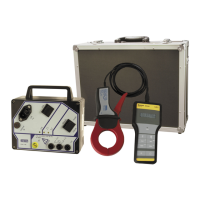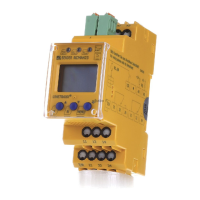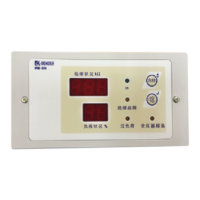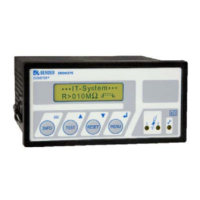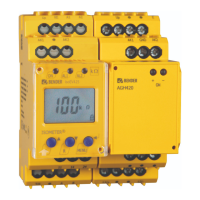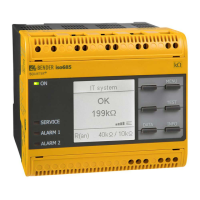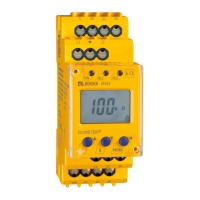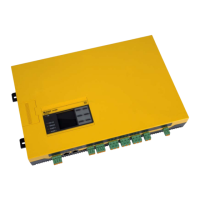RCM410R-x_D00403_01_M_XXEN/09.2020 9
LINETRAXX® RCM410R-1/-2
2.2.2 Manual self test
By pressing the T/R button > 3 s and < 6 s, the device simulates a residual current with the value
1.5 x I
Δn
. All LEDs light up and the relay switches. When the fault memory is enabled, the alarm
LEDs and the relay remain active until the fault memory is cleared by means of the T/R button.
2.2.3 Malfunction
If an internal malfunction occurs, the status LED lights up RED. The error code can be queried via
the device interfaces.
2.2.4 Alarm assignments to the alarm relay
The messages "Device error", "Residual operating current I
Δn
", "Prewarning", "CT connection fault"
and/or "Test" can be assigned to the alarm relay via the device interface.
2.2.5 Delay times t
b
, t, t
on
, and t
off
The times t
b
, t, t
on
and t
off
described below delay the output of alarms via LEDs, relay and Modbus
RTU.
2.2.5.1 Recovery time t
b
The recovery time is the time the device needs to be ready for measurement after connecting the
supply voltage U
s
.
2.2.5.2 Start-up delay t
After connecting the supply voltage U
S
, the measuring function is delayed by the set time t
(0…999 s) plus the recovery time t
b
.
2.2.5.3 Response delay t
on
If a residual operating current is exceeded, the residual current monitor requires the response
time t
an
to output the alarm. A set response delay t
on
(0…10 s) is added to the device-specific op-
erating time t
ae
and delays signalling:
Response time t
an
= t
ae
+ t
on
If the fault does not persist during the response delay, the alarm is not signalled.
2.2.5.4 Delay on release t
off
If the alarm no longer exists and the fault memory is disabled, the alarm LEDs go out and the
alarm relays switch back to their initial position. By means of the delay on release (0...999 s), the
alarm state is maintained for the selected period.

